LIFESTYLE
Shawn Simpson: The Unconventional Journey of Boutique Air’s Visionary CEO

In the competitive world of commercial aviation, where legacy carriers dominate and startups face monumental challenges, Shawn Simpson’s rise to become CEO and majority shareholder of Boutique Air stands as a remarkable story of unconventional success. With a background far removed from traditional aviation pathways—spanning biology, environmental studies, cartography, and Silicon Valley tech—Simpson has carved out a unique niche in regional air travel. This 1,400-word profile explores his unexpected career trajectory, the innovative business model of Boutique Air, and his vision for the future of small-market air service.
From Biology to Aviation: An Unlikely Career Path
Shawn Simpson’s journey to airline executive began with academic pursuits that showed no hint of his future in aviation. He graduated from the University of California at Santa Cruz with a double major in biology and environmental studies—disciplines seemingly unrelated to running an airline 9.
“I did not expect to become an airline CEO in the least,” Simpson admitted with characteristic humor about his unconventional path 9. His first post-college position as a cartographer for GreenInfo Network in San Francisco proved pivotal when he discovered the job required greater computer skills than he possessed. Rather than retreating, Simpson taught himself to write computer code, demonstrating an adaptability that would become his trademark 9.
This newfound technical proficiency launched Simpson into the tech world, first at digital money transfer provider Xoom, then at Google as a systems administrator. While successful in Silicon Valley, the high-pressure environment eventually led him to seek change after five years. “I needed to take a break,” he recalled about his departure from Google 9.
The Aviation Epiphany
Simpson’s transition to aviation began during a consulting engagement in New York with a firm involved in the aviation industry. This exposure planted the seeds for what would become his life’s work. When he returned to San Francisco in 2009, Simpson combined his technical background with his “new-found aviation knowledge” to explore business opportunities in the aviation-travel space 9.
His initial venture focused on the technology side of travel—an airline reservation company. But in 2011, Simpson made the bold decision to purchase “a charter company that had a FAA license and one small plane with it,” marking his official entry into aviation operations 9. This small charter operation hardly needed sophisticated reservation systems, prompting Simpson and his team to reconsider their direction. “After a little while, we decided to go for it,” he said, setting the stage for Boutique Air’s creation 9.
Building Boutique Air: A Unique Business Model
Boutique Air’s breakthrough came in 2014 when it successfully bid for the Essential Air Service (EAS) route connecting Clovis, New Mexico with Dallas-Fort Worth. The EAS program, established as part of the 1978 Airline Deregulation Act, subsidizes air service to small communities that might otherwise lose connectivity 9.
“We were just a little company with one plane and no real background in airlines, but [officials in Clovis] put their faith in us,” Simpson recalled of their first contract 9. This initial success led to rapid expansion. Within three years, Boutique Air grew from one route and one plane to serving 30 cities with 25 aircraft 9.
The airline’s current operations include:
- 25 aircraft (21 Pilatus PC-12s seating eight passengers and four Beechcraft King Air 350s accommodating nine) 9
- 115 daily flights serving 30 communities across 14 states 9
- 450 employees supporting operations 9
- Approximately 200,000 passengers annually (projected from 93,749 in mid-2017 to exceed 200,000 by year’s end) 9
About 90% of Boutique’s business comes from EAS-subsidized flights, with the remaining 10% comprising charter operations 9. The airline’s most popular route connects Denver with Cortez, Colorado 9.
Innovative Approaches to Regional Air Service
Simpson has implemented several unconventional strategies that set Boutique Air apart from traditional regional carriers:
Aircraft Selection: By utilizing single-engine PC-12s and King Air 350s under 12,500 pounds, Boutique avoids pilot staffing shortages plaguing many regional airlines. These weight classifications allow them to hire pilots with fewer flight hours than required by larger regional carriers 9.
Two-Pilot Policy: While FAA regulations only require one pilot for their aircraft classes, Boutique insists on two pilots per flight. “Two pilots give you peace of mind, and it is truly safer,” Simpson explained. “When things get complicated in the air, it’s really good to have another pilot there to help out” 9.
Interline Agreements: The airline recently signed a significant interline agreement with United Airlines, allowing passengers to book connecting flights to Boutique-served communities directly through United’s system. “This is big for us,” Simpson noted about the partnership’s potential to increase accessibility 9.
Boutique Experience: The airline’s name reflects Simpson’s vision of offering “something a little bit different, a little bit more personal, a little bit nicer but not extravagant, like a boutique hotel” 9.
Navigating Challenges and Future Directions
Like all EAS-dependent carriers, Boutique Air faces uncertainty from potential changes to the federal subsidy program. The Trump administration’s 2017 proposal to eliminate EAS funding highlighted this vulnerability, though Simpson noted the program enjoys bipartisan support and was likely to continue 9.
“I’d welcome the chance not to be so dependent on a single revenue stream,” Simpson said about diversifying beyond EAS routes 9. His strategy includes launching non-subsidized routes like the Los Angeles to Inyokern, California service targeting workers at a nearby naval air weapons training center 9.
Other future considerations include:
- Gradual reduction of EAS dependence while maintaining service to small communities
- Expansion of interline partnerships with major carriers
- Potential fleet diversification as route structures evolve
- Continued emphasis on safety and customer experience
Leadership Philosophy and Personal Journey
Simpson’s leadership style reflects his unconventional background. His tech industry experience informs Boutique’s operational systems and customer interfaces, while his environmental studies background may influence the airline’s efficiency-focused approach (though this connection isn’t explicitly stated in sources).
Notably, Simpson isn’t a licensed pilot—though he’s accumulated 20 hours of flight time with aspirations to earn his license. His lighthearted comment about his flying skills—”I think I can land a plane and people would be able to walk away”—reveals his humble approach to aviation 9.
This humility extends to his assessment of Boutique’s rapid growth: “So, three years ago, we have one route and one plane, and now we’re operating in 30 cities and have 25 airplanes” 9. The statement captures both pride in accomplishment and amazement at the journey.
Conclusion: Redefining Regional Air Service
Shawn Simpson’s story challenges conventional wisdom about airline executives and regional air service. His path—from UC Santa Cruz biology classrooms to Google’s server rooms to the CEO office of a growing airline—demonstrates how diverse experiences can combine to create innovative business models.
Under Simpson’s leadership, Boutique Air has shown that small aircraft, smart route selection, and quality service can successfully connect communities often overlooked by major carriers. While EAS subsidies currently form the foundation of the business, Simpson’s vision points toward a more diversified future that maintains service to small markets while developing sustainable revenue streams.
As the aviation industry continues evolving—with pilot shortages, environmental concerns, and changing travel patterns—Simpson’s unconventional background may prove an asset. His ability to adapt, from teaching himself coding to navigating FAA regulations, suggests Boutique Air will continue finding creative solutions to industry challenges.
For Shawn Simpson, the unlikely airline executive, the journey continues—one small market at a time.
BLOG
Teenthailand_11_SC1: Unveiling Thailand’s Youth Culture

Thailand, a country renowned for its vibrant culture, stunning landscapes, and rich history, is also home to a dynamic and ever-evolving youth culture. Among the many facets of this culture, one term that has recently gained traction is “Teenthailand_11_SC1.” While the exact origins and meaning of this term may be shrouded in mystery, it appears to be a nod to the unique identity, trends, and experiences of Thailand’s younger generation. This article delves into the essence of Teenthailand_11_SC1, exploring its significance, the trends it represents, and its impact on Thai society.
The Rise of Teenthailand_11_SC1
The term “Teenthailand_11_SC1” seems to encapsulate a specific segment of Thailand’s youth culture, possibly tied to a particular event, movement, or online community. The inclusion of “11” and “SC1” suggests a coded or niche reference, perhaps linked to a school, a social media group, or a cultural phenomenon. While the exact meaning remains elusive, it is clear that Teenthailand_11_SC1 resonates with young Thais who are navigating the complexities of modern life while staying rooted in their cultural heritage.
Thailand’s youth are known for their creativity, adaptability, and tech-savviness. They are the driving force behind many of the country’s emerging trends, from fashion and music to social activism and digital innovation. Teenthailand_11_SC1 appears to be a reflection of this energy, serving as a symbol of unity and identity for young people who are shaping the future of their nation.
The Influence of Social Media
One of the key factors behind the rise of terms like Teenthailand_11_SC1 is the pervasive influence of social media. Platforms like Instagram, TikTok, and Twitter have become virtual playgrounds for Thailand’s youth, allowing them to express themselves, connect with like-minded individuals, and showcase their creativity. Hashtags, challenges, and viral trends often originate from these platforms, and it is likely that Teenthailand_11_SC1 emerged in a similar fashion.
Social media has also given Thai youth a platform to address social issues and advocate for change. From environmental activism to calls for educational reform, young people are using their voices to challenge the status quo and push for a better future. Teenthailand_11_SC1 may be a rallying cry for this generation, symbolising their shared aspirations and determination to make a difference.
Fashion and Aesthetics
Fashion is another area where Teenthailand_11_SC1 seems to leave its mark. Thai youth are known for their eclectic and innovative sense of style, blending traditional elements with modern trends to create unique looks. Streetwear, vintage fashion, and DIY aesthetics are particularly popular, reflecting a desire to stand out and express individuality.
The term Teenthailand_11_SC1 could be associated with a specific fashion trend or subculture. For instance, it might represent a group of young people who embrace a particular aesthetic, such as retro-inspired outfits or futuristic designs. Alternatively, it could be linked to a local brand or designer that has gained a cult following among Thailand’s youth.
Music and Entertainment
Music is another cornerstone of Thai youth culture, and Teenthailand_11_SC1 may have ties to the country’s vibrant music scene. From indie bands and hip-hop artists to K-pop-inspired groups, Thailand’s music industry is diverse and constantly evolving. Young people are not only consumers of music but also active participants, forming bands, producing their own tracks, and sharing their work online.
The term Teenthailand_11_SC1 might be associated with a specific genre, artist, or music event. For example, it could refer to a concert series, a fan club, or a collaborative project that brings together young musicians and fans. Music has the power to unite people, and Teenthailand_11_SC1 could be a testament to the unifying force of sound and rhythm.
The Role of Education and Ambition
Education plays a significant role in the lives of Thai youth, and Teenthailand_11_SC1 may also reflect their aspirations and ambitions. Many young people in Thailand are striving to excel academically while pursuing their passions and interests. The term could symbolise the balance they seek between tradition and modernity, between their responsibilities and their dreams.
In recent years, there has been a growing emphasis on innovation and entrepreneurship among Thailand’s youth. Start-ups, creative projects, and social enterprises are on the rise, driven by young people who are eager to make their mark on the world. Teenthailand_11_SC1 might represent this spirit of innovation, serving as a reminder that the future belongs to those who dare to dream and take action.
Challenges and Resilience
While Teenthailand_11_SC1 embodies the energy and optimism of Thailand’s youth, it is important to acknowledge the challenges they face. Economic inequality, political instability, and environmental issues are just some of the obstacles that young people must navigate. Despite these challenges, they continue to demonstrate resilience and determination, finding ways to overcome adversity and create opportunities for themselves and others.
The term Teenthailand_11_SC1 could also be a symbol of this resilience, representing the strength and perseverance of a generation that refuses to be defined by its struggles. It is a reminder that even in the face of hardship, there is hope and the potential for positive change.
The Global Connection
Thailand’s youth are not isolated from the rest of the world; they are deeply connected to global trends and movements. Teenthailand_11_SC1 may reflect this global perspective, blending local traditions with international influences to create something uniquely Thai. Whether it’s through fashion, music, or social activism, young people in Thailand are making their voices heard on the global stage.
This connection to the wider world also means that Teenthailand_11_SC1 has the potential to inspire and influence youth beyond Thailand’s borders. As a symbol of creativity, resilience, and innovation, it could resonate with young people everywhere, fostering a sense of solidarity and shared purpose.
Conclusion
Teenthailand_11_SC1 is more than just a term; it is a reflection of the vibrant, dynamic, and multifaceted nature of Thailand’s youth culture. While its exact meaning may remain open to interpretation, it undoubtedly represents the creativity, ambition, and resilience of a generation that is shaping the future of their country. From social media and fashion to music and activism, Teenthailand_11_SC1 encapsulates the spirit of young Thais who are navigating the complexities of modern life while staying true to their roots.
As Thailand continues to evolve, so too will its youth culture. Terms like Teenthailand_11_SC1 serve as a reminder of the power of young people to drive change, inspire others, and create a better future. The youth of Thailand are proving they are a force to be reckoned with through art, innovation, and advocacy, and Teenthailand_11_SC1 stands as a testament to their enduring spirit.
BLOG
Oliver 550 Carburetor: Performance, Maintenance & Tuning Tips
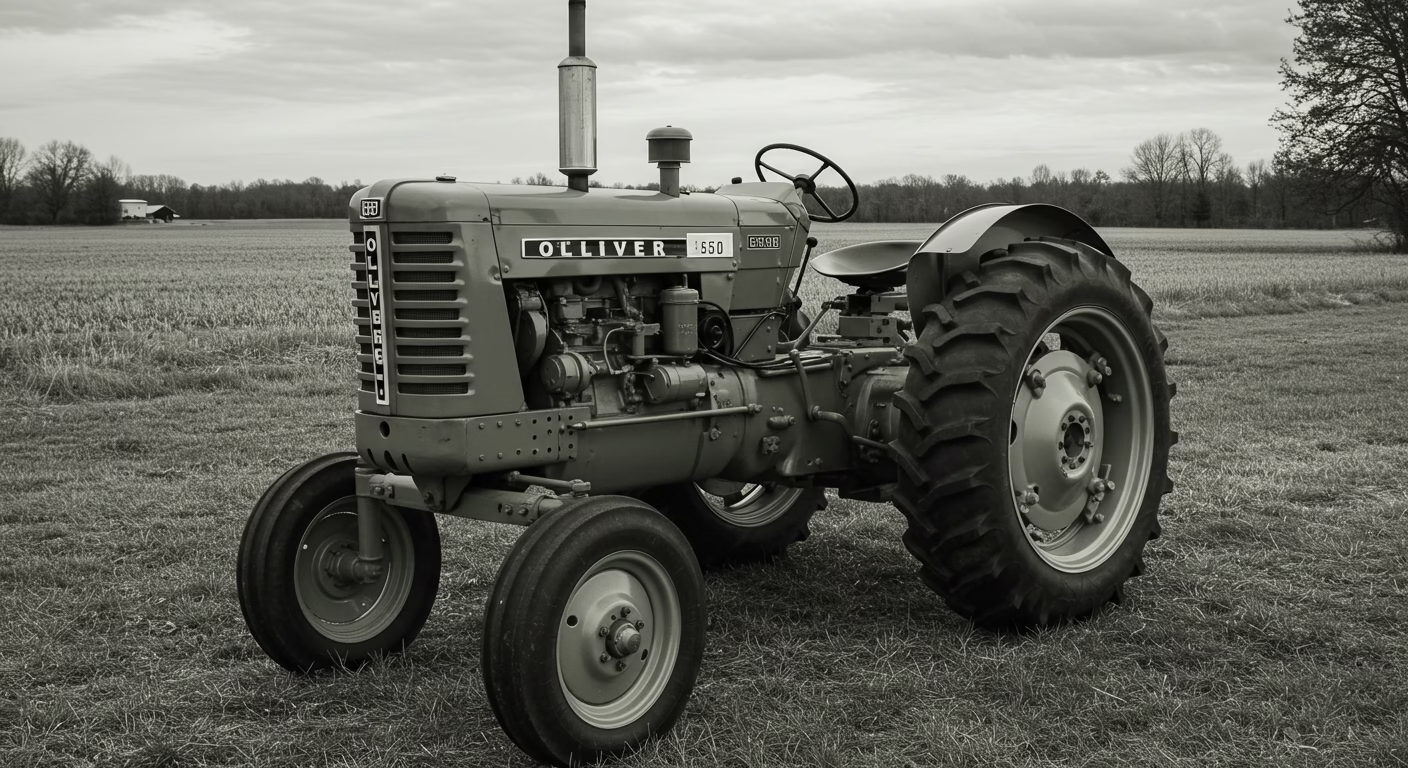
The Oliver 550 tractor remains a respected workhorse in the agricultural world, valued for its strength, durability, and consistent performance. At the core of its engine lies a key component—the carburetor. Specifically, the oliver 550 carburetor plays a crucial role in delivering the correct air-to-fuel mixture needed for combustion. Without this proper blend, the engine can struggle, underperform, or even fail to start. Therefore, understanding how the carburetor works is essential for anyone maintaining or restoring this classic tractor.
To begin with, the oliver 550 carburetor regulates airflow and fuel input into the engine’s cylinders. As the engine demands change, the carburetor adjusts accordingly to maintain efficiency. Consequently, when the carburetor is clean and well-tuned, the tractor runs smoothly and responds well under load. However, over time, various issues may arise. Dirt buildup, fuel residue, or worn components can lead to poor fuel delivery, rough idling, or hard starts. In such cases, cleaning or rebuilding the oliver 550 carburetor often restores proper function.
Moreover, tuning the carburetor correctly improves both performance and fuel economy. While this may seem complex, following step-by-step guides simplifies the process. Additionally, routine inspections can help catch issues early, before they lead to larger problems. Whether you’re plowing, hauling, or showing off your restored machine, a properly functioning Oliver 550 carburetor makes a noticeable difference.
In summary, maintaining the Oliver 550 carburetor is not only important—it’s vital. Through regular care, careful tuning, and timely rebuilds, you ensure reliable operation and extend the life of your tractor.
In this guide, we’ll cover:
✔ How the Oliver 550 carburetor works
✔ Common problems & troubleshooting
✔ Step-by-step maintenance & rebuild tips
✔ Performance tuning for better efficiency
Understanding the Oliver 550 Carburetor
The carburetor plays a crucial role in the performance of any internal combustion engine. Specifically, it ensures that air and fuel are mixed in the proper ratio before this mixture is delivered to the engine’s combustion chamber. Without this precise blend, the engine would either run too rich, causing excess fuel consumption, or too lean, potentially leading to damage. Consequently, a reliable carburetor is essential for efficient engine operation. In the case of the Oliver 550 tractor, the carburetor is especially important, since this model depends heavily on consistent performance in farming and utility work.
Over the years, the Oliver 550 carburetor has come in different configurations. Typically, it uses either a Zenith or Marvel-Schebler design, depending on the specific model year. While both types are known for their reliability, there are minor differences in tuning and maintenance. For example, early versions often featured the Marvel-Schebler carburetor, whereas later ones began incorporating the Zenith version. Therefore, knowing which carburetor is on a particular Oliver 550 is vital when ordering parts or performing adjustments.
Moreover, the Oliver 550 carburetor is relatively easy to service. Because of its straightforward design, cleaning or rebuilding it can restore lost power and improve fuel efficiency. However, proper synchronization between the air and fuel mixture must still be maintained. Otherwise, performance issues may persist. Additionally, since the Oliver 550 carburetor can wear over time, periodic inspections are recommended. Not only do these checks help maintain engine health, but they also prevent sudden breakdowns in the field.
In summary, whether you’re troubleshooting engine issues or simply performing routine maintenance, understanding the function and specifics of the Oliver 550 carburetor remains a key part of keeping this classic tractor running smoothly.
Key Components:
-
Float Bowl – Regulates fuel levels
-
Main Jet – Controls fuel flow at high speeds
-
Idle Jet – Manages fuel at low RPM
-
Throttle & Choke Plates – Adjust air intake
-
Gaskets & Seals – Prevent fuel leaks
Common Carburetor Problems & Fixes
1. Hard Starting or No Start
-
Possible Causes: Clogged jets, stuck float, bad gaskets
-
Solution: Clean carburetor, check fuel flow, replace worn parts
2. Poor Idle or Stalling
-
Possible Causes: Dirty idle circuit, vacuum leaks
-
Solution: Adjust idle screw, inspect for air leaks
3. Black Smoke (Rich Mixture)
-
Possible Causes: Overly rich fuel mixture, stuck choke
-
Solution: Tune air-fuel ratio, check choke operation
4. Engine Surging or Hesitation
-
Possible Causes: Fuel starvation, clogged filter
-
Solution: Clean fuel lines, replace filter
Step-by-Step Carburetor Rebuild
If your Oliver 550 is running poorly, a carburetor rebuild may be necessary. Here’s a simplified process:
Tools Needed:
-
Carburetor rebuild kit
-
Screwdrivers, wrenches
-
Carb cleaner & compressed air
-
New gaskets & seals
Steps:
-
Remove the carburetor from the engine.
-
Disassemble carefully, noting jet sizes and gasket positions.
-
Soak parts in carb cleaner to remove varnish buildup.
-
Blow out passages with compressed air.
-
Replace jets, gaskets, and seals with new ones.
-
Reassemble & reinstall, then adjust idle and mixture screws.
Performance Tuning Tips
-
Adjust the idle screw for smooth low-RPM operation.
-
Fine-tune the main jet for optimal high-speed performance.
-
Check the float level to prevent flooding or starvation.
-
Upgrade to an ethanol-resistant kit if using modern fuel.
Final Thoughts
A well-maintained carburetor is essential for the reliable operation of your tractor. Specifically, the Oliver 550 carburetor plays a key role in ensuring smooth performance whether you’re working hard in the fields or proudly displaying your tractor at a local rally. First and foremost, proper care keeps the engine running efficiently. In addition, it reduces fuel waste, prevents hard starts, and minimizes the risk of stalling. Therefore, taking the time to clean, tune, and occasionally rebuild your carburetor is not only beneficial—it’s necessary.
To begin with, regular cleaning of the Oliver 550 carburetor helps remove dirt, varnish, and debris that can clog jets and passages. As a result, fuel flows more freely, which leads to better combustion. Furthermore, proper tuning ensures the air-to-fuel mixture remains balanced under different loads and temperatures. Although tuning may seem technical at first, it becomes easier with experience. Meanwhile, rebuilding the oliver 550 carburetor should be considered when cleaning and tuning no longer restore performance. Fortunately, rebuild kits are widely available, and most come with detailed instructions.
Additionally, choosing quality parts is important. While some may consider generic kits, it’s usually better to rely on reputable sources. As such, tractor restoration specialists often carry dependable components. Likewise, trusted online suppliers provide a convenient alternative. Whether you prefer local service or digital convenience, options exist for every need. Also, don’t forget to double-check compatibility before ordering.
In conclusion, regular maintenance not only prolongs the life of the Oliver 550 carburetor but also ensures optimal performance throughout every season. Even though the process requires time and effort, the long-term benefits far outweigh the inconvenience. Ultimately, caring for your oliver 550 carburetor is a worthwhile investment in the reliability and heritage of your machine.
FASHION
Lost Hills Clothing: A Lifestyle Brand Redefining Modern Streetwear

In today’s fast-paced fashion world, clothing is no longer just about fabric or design. It is about culture, lifestyle, and identity. For modern consumers, especially Millennials and Gen Z, clothing represents self-expression, community, and purpose. One brand that has been making waves in this evolving landscape is Lost Hills Clothing, a label that blends streetwear aesthetics with authentic storytelling, cultural relevance, and sustainable values.
This article explores the rise of Lost Hills Clothing, its philosophy, its influence in fashion and culture, and why it stands as a prime example of the future of streetwear-driven lifestyle brands.
What is Lost Hills Clothing?
Lost Hills Clothing is more than just a streetwear brand—it’s a movement. Born out of the desire to connect art, fashion, and culture, the brand captures the energy of urban environments and translates it into wearable expression. Its collections are characterized by bold designs, comfortable fits, and themes that resonate with youth culture.
But what sets Lost Hills Clothing apart is its ability to create a lifestyle beyond the clothes. For its customers, wearing Lost Hills means belonging to a community that values creativity, individuality, and social awareness.
A Brand Philosophy Rooted in Culture
At the heart of Lost Hills Clothing lies a philosophy that prioritizes meaning over mass production. The brand embraces three core values:
-
Authenticity: Each design reflects genuine cultural influences, from music and art to street culture and social movements.
-
Sustainability: Recognizing the environmental impact of fashion, Lost Hills Clothing emphasizes responsible production and eco-conscious practices.
-
Community: The brand isn’t just about selling apparel—it’s about fostering a collective identity that resonates with its audience.
This philosophy has allowed Lost Hills to establish itself as more than a clothing line. Instead, it has become a cultural bridge where fashion meets lifestyle and values.
Bridging Streetwear and Lifestyle
The rise of streetwear as a global fashion movement is undeniable. Once rooted in skate culture and hip-hop scenes, streetwear has become mainstream, influencing high fashion and casualwear alike. Lost Hills Clothing thrives in this space by offering more than trends—it offers meaning.
Examples of its unique approach include:
-
Limited-Edition Drops: Creating exclusivity and building anticipation for each release.
-
Collaborations: Partnering with artists, musicians, and designers to produce collections that reflect shared values.
-
Cultural Relevance: Designing apparel that reflects not just style, but the mood and messages of the times.
By merging fashion with cultural storytelling, Lost Hills Clothing appeals to a generation that values experience and identity as much as aesthetics.
Influence in the Digital Age
Lost Hills Clothing has fully embraced the power of the digital era. Social media platforms, online communities, and influencer collaborations are central to its growth strategy. The brand uses digital spaces not just for marketing but for creating meaningful conversations with its audience.
Through Instagram campaigns, TikTok features, and influencer partnerships, Lost Hills Clothing:
-
Reaches younger audiences who seek both style and authenticity.
-
Engages customers with behind-the-scenes content, styling tips, and collaborations.
-
Builds brand loyalty through transparency, inclusivity, and cultural relevance.
In the digital age, Lost Hills has become a brand that doesn’t just sell clothes—it builds movements.
A Model for Modern Fashion Brands
It reflects larger shifts in consumer expectations. Today’s shoppers want brands that align with their values. Style is important, but so are ethics, sustainability, and inclusivity. Lost Hills Clothing has positioned itself as a model for this next generation of fashion brands by emphasizing:
-
Transparency: Sharing information about materials, production, and community efforts.
-
Inclusivity: Ensuring that collections and campaigns represent diverse identities.
-
Responsibility: Addressing the need for fashion that reduces environmental harm.
By blending these principles with stylish, culturally relevant apparel, Lost Hills proves that purpose and performance can coexist in modern fashion.
Challenges and Opportunities
Like any brand navigating today’s competitive fashion market, Lost Hills Clothing faces challenges. Among them:
-
Balancing exclusivity with accessibility for a growing audience.
-
Convincing traditional fashion stakeholders of the long-term value in sustainability.
-
Adapting to fast-changing digital and cultural trends.
Yet these challenges also present opportunities. For Lost Hills Clothing, each obstacle has become a chance to innovate, whether through new digital strategies, sustainable practices, or bold collaborations. By embracing challenges, the brand positions itself for continued relevance and growth.
Why Lost Hills Clothing Matters
It is not just a brand—it’s a reflection of where fashion is heading. It embodies the merging of culture, identity, and responsibility in clothing. For customers, wearing Lost Hills is not only about fashion but about belonging to a movement that values authenticity, sustainability, and creativity.
As fashion consumers become more socially aware, brands like Lost Hills Clothing are leading the charge in redefining what success in the industry looks like. It is no longer just about mass sales or seasonal trends—it is about building communities, sparking conversations, and creating lasting cultural impact.
Looking Ahead
The future of Lost Hills Clothing looks promising. With a growing community, strong cultural identity, and a commitment to sustainability, the brand is poised to continue shaping the streetwear landscape.
As fashion continues to evolve, Lost Hills Clothing stands as a reminder that the most successful brands are those that balance creativity with responsibility, and style with purpose. For Millennials and Gen Z especially, who seek authenticity and meaning, Lost Hills Clothing represents the future of fashion.
In a world where clothing speaks louder than words, Lost Hills is giving people the opportunity to wear not just style, but identity, culture, and values.
Final Thoughts
Lost Hills Clothing has risen as a standout name in the global streetwear movement by redefining what it means to be a fashion brand. It has proven that apparel can be both stylish and socially meaningful, exclusive yet inclusive, and trend-driven while still authentic.
By bridging fashion with cultural relevance and sustainable practices, Lost Hills Clothing is setting the standard for the next generation of lifestyle brands. It is not just a label—it is a community, a culture, and a commitment to the future of fashion.
-

 EDUCATION5 months ago
EDUCATION5 months agoHCOOCH, CH₂, and H₂O: Key Molecules in Chemistry and Life
-

 BLOG3 months ago
BLOG3 months agoTeenthailand_11_SC1: Unveiling Thailand’s Youth Culture
-

 BLOG4 months ago
BLOG4 months agoTheapknews.shop Health: Your Gateway to Wellness and Tech
-
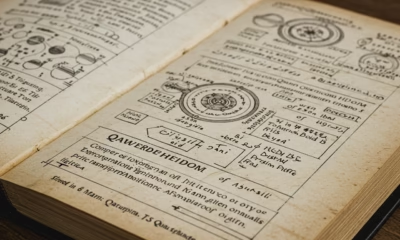
 EDUCATION7 months ago
EDUCATION7 months agoQawerdehidom: Origins, Principles, and Modern Applications
-
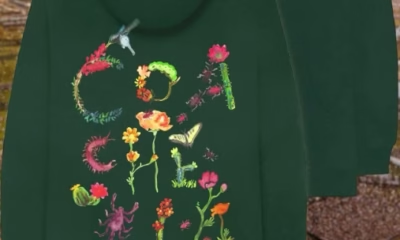
 ENTERTAINMENT4 months ago
ENTERTAINMENT4 months agoWhat Are Coachella Co-Chairs: The Visionaries Behind the Iconic Festival
-
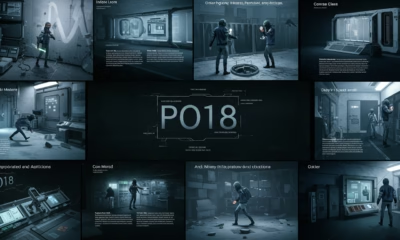
 BLOG7 months ago
BLOG7 months agoPO18: A Comprehensive Guide to Its Meaning and Applications
-
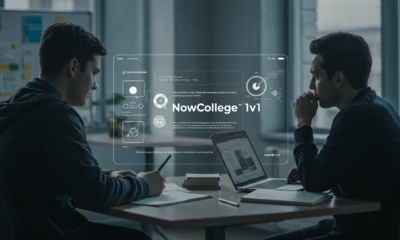
 EDUCATION5 months ago
EDUCATION5 months agoNowCollege 1v1: Redefining Personalized Higher Education
-
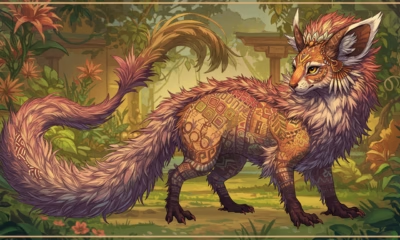
 ART5 months ago
ART5 months agoKemono Nyl2: A Fusion of Art and Culture
